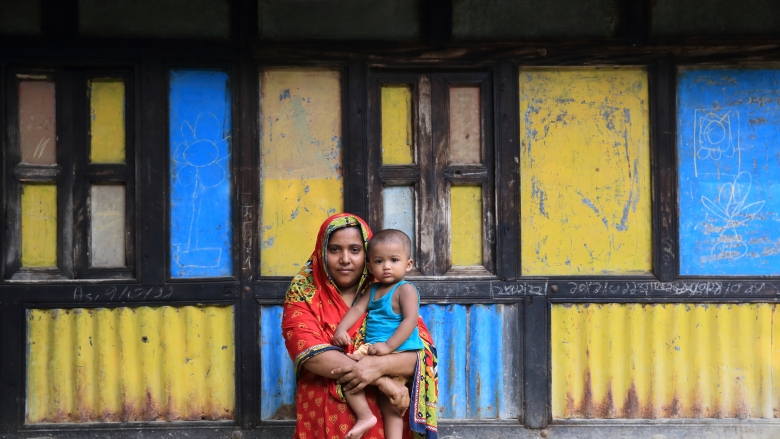The Bangladesh Development Update, April 2016 notes that Bangladesh economy remained strong and resilient despite external and internal challenges. Bangladesh is among the top 12 developing countries with a population of over 20 million, who achieved 6 plus percent growth in 2016. By any standards, Bangladesh economy has done well. Bangladesh needs to focus on a growth agenda centered on sustainable and inclusive growth.
Stable macro-economy. Overall inflation declined from 6.5% in March 2015 to 5.65% in March 2016. Food inflation declined from 6.4% to 3.9%, thanks to a good rice harvest, declining international food prices and a stable exchange rate. However non-food inflation rose from 6.1% to 8.4% as a result of suppressed domestic demand, increase in wages, electricity and gas prices. The balance of payment (BoP) remains comfortable with a large surplus in both current and financial accounts, due to recovery in export, increased Foreign Direct Investment and aid disbursements. Monetary targets are underachieved due to limited growth in domestic credit.
Stagnating private investment rate. With its contribution to gross domestic product (GDP) growth declining from 1.5 percentage point to 1.3 percentage point stagnating private investment remains a concern. Other challenges to the economy include: decline in agricultural growth, appreciation in Real Effective Exchange Rates, a struggling banking sector with weak governance in state banks coupled with slow pace and quality of development spending. Progress on export product and market diversification remains slow. There is also excessive dependence on the Gulf Cooperation of Council (GCC) for remittance inflows.
Budget deficit is rising. Revenue collection target in FY16 may fall short causing budget deficit to rise. Public expenditure will be lower than the planned budget size. However, the deficit is likely to remain within sustainable limits.
Structural reforms yet to gain momentum. While the government has already approved a few important legal amendments pertaining to special economic zones such as, export processing zone labor rights and bus rapid transit, implementation needs to be reinforced.
Mixed Global Outlook for Bangladesh. Income growth prospects in Bangladesh’s main export markets are uneven, but sustained low oil prices bode well for external and internal balance. With modest fiscal expansion and some easing of the infrastructure bottlenecks, GDP growth is projected to rise gradually towards 7 plus percent.
Financial and political shocks can cloud the outlook. Few factors continue to hinder growth: infrastructure bottlenecks; power and primary energy shortage; credit shocks in the banking system; difficulties of doing business; and lack of reform continuity. Bangladesh needs strong structural reforms and effective public investment efforts to be on a higher and faster growth path. Further, weakness in the financial sector also disrupts investment and growth. Weak bank balance sheets and governance in the State owned Banks limit lending capacity, divert credit away from productive investment, and impose large fiscal recapitalization costs. High levels of non-performing loans and the high rates on national savings certificates increase banks’ operating and funding costs, keeping interest rates high despite large excess liquidity.
Bottlenecks in infrastructure, energy and transport are the major challenges. The 7th Five Year Plan estimates about US$ 410 billion financing, twice the size of GDP needed for developing the country’s infrastructure.
Measures to sustain growth
Private sector participation can help address part of the infrastructure gap, but the country needs substantial public sector funding for investments in transport, river management and other infrastructures.
For energy sector, energy price reform is needed to attract investments in primary energy.
Reforms in government regulations pertaining to mediating civil and commercial cases, companies act, customs act and property registration are needed to strengthen competitiveness and ease of doing business. A careful selection of industrial zones will increase private sector efficiency.
Priorities in the financial sector include:
(i) improving State owned Banks (SB) balance sheets through recapitalization on improved loan recovery and credit growth limits
(ii) strengthening financial sector regulation and supervision;
(iii) improving the legal and financial loan recovery framework;
(iv) addressing risks from concentration and macro-fiscal linkages.

